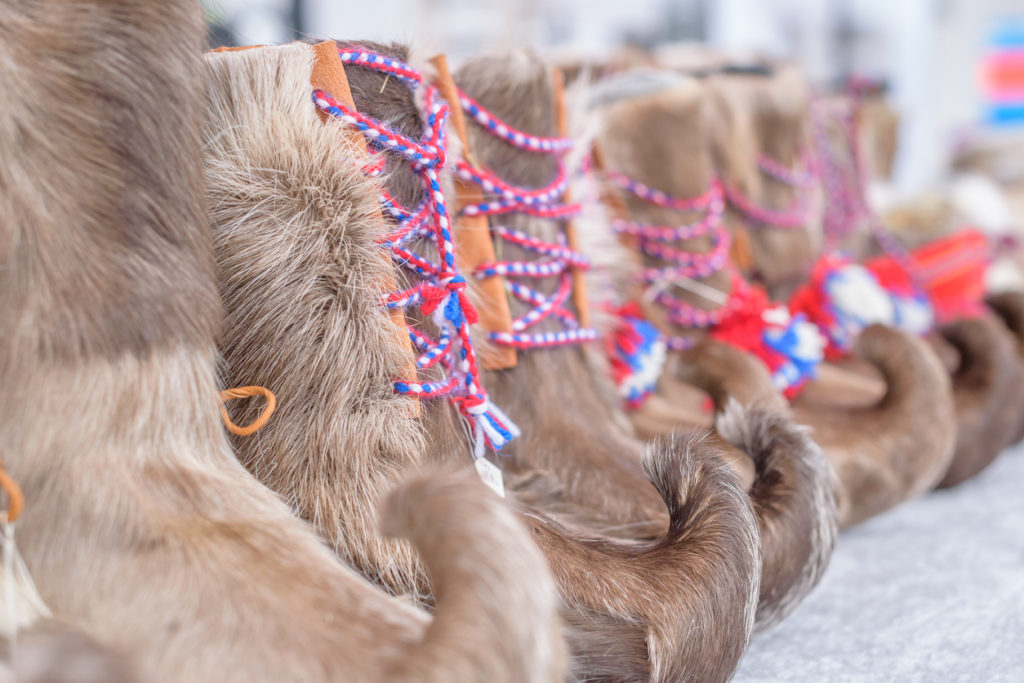How Has Modern Life Affected Sami Traditions?
Deep in the heart of Finnish Lapland, the Sami people, Europe’s only recognised indigenous group, have maintained a rich cultural heritage for centuries. However, the advent of modern life has brought significant changes to their traditional ways. This blog post explores how technology, urbanisation, globalisation, and other modern influences have impacted Sami traditions.
Impact of Technology on Sami Traditions
Technology has had a profound impact on Sami traditions, both positively and negatively. On one hand, modern tools and machinery have made traditional occupations like reindeer herding more efficient. GPS technology, for instance, helps herders track their reindeer across vast landscapes, ensuring they do not stray too far. Snowmobiles have replaced traditional sleds, making it easier to navigate the snowy terrain.
On the other hand, the influx of technology has also led to a decline in some traditional practices. Younger generations are increasingly drawn to digital entertainment and social media, which can detract from time spent learning and practising traditional skills such as handicrafts (duodji) and storytelling. The challenge lies in balancing the benefits of modern technology with the preservation of age-old traditions.
Urbanisation and Its Effect on Sami Culture
Urbanisation has led many Sami to migrate from rural areas to cities in search of better employment opportunities and modern amenities. This migration has resulted in a dilution of traditional Sami culture, as urban environments often lack the communal and natural settings that are integral to Sami life.
In cities, Sami people may find it challenging to maintain their traditional practices, such as reindeer herding, fishing, and foraging. The communal aspect of Sami culture, which thrives in close-knit rural communities, can be lost in the anonymity of urban life. However, urbanisation has also led to the establishment of Sami cultural centres in cities, which aim to preserve and promote Sami heritage among urban dwellers.
The Influence of Globalisation on Sami Identity
Globalisation has brought both opportunities and challenges to the Sami people. On the positive side, it has increased global awareness of Sami culture, leading to greater appreciation and support for their traditions. International platforms have allowed Sami artists, musicians, and activists to share their culture with a broader audience.
However, globalisation also poses a threat to Sami identity. The influx of global cultural influences can overshadow traditional Sami practices, leading to a loss of cultural uniqueness. Additionally, the commercialisation of Sami culture for tourism can sometimes result in misrepresentation and exploitation, rather than genuine cultural exchange.
Changes in Traditional Sami Occupations
Traditional Sami occupations such as reindeer herding, fishing, and handicrafts have undergone significant changes due to modern influences. Reindeer herding, once a purely subsistence activity, has become more commercialised, with herders now selling reindeer meat and products to a global market.
Fishing and foraging, while still practised, have also been affected by environmental changes and regulations. The introduction of modern fishing equipment has made the practice more efficient but has also led to overfishing in some areas. Similarly, the availability of store-bought goods has reduced the reliance on foraging for berries and other natural resources.
Handicrafts (_duodji_) remain an important part of Sami culture, but the market for these traditional items has shifted. While there is still a demand for authentic Sami crafts, mass-produced imitations can undermine the value of genuine handmade items.
Modern Challenges to Sami Languages
The Sami people speak several distinct languages, including North Sami, Inari Sami, and Skolt Sami. These languages are integral to their cultural identity but face significant challenges in the modern world. The dominance of Finnish and other global languages has led to a decline in the number of Sami speakers, particularly among younger generations.
Efforts are being made to revitalise Sami languages through education and media. Sami language schools and cultural programmes aim to teach the younger generation their ancestral tongue. Additionally, Sami-language media, including radio and television programmes, play a crucial role in keeping the language alive.
However, the struggle to maintain these languages is ongoing, and the support of both the Sami community and broader society is essential for their preservation.
At VALO Finland, we understand the importance of preserving and respecting Sami traditions. Our luxury retreats in Finnish Lapland offer a unique opportunity to experience this rich culture firsthand. From private transport to expert guides, we ensure that your stay is both immersive and respectful of the local heritage. Join us at VALO Ice Cube Villas and discover the magic of Lapland while supporting the preservation of Sami traditions.
